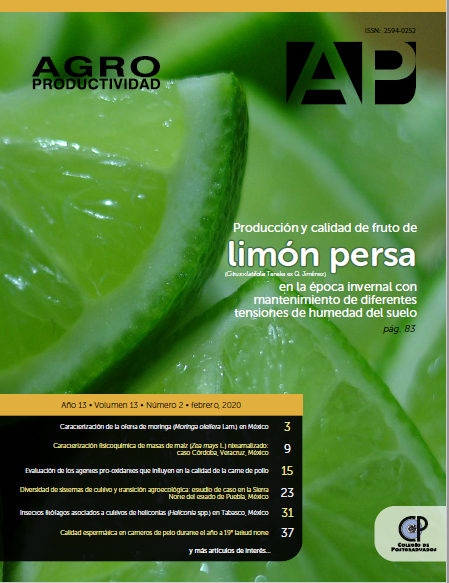Diversity of cropping systems and agroecological transition: case study in Northern Sierra of the State of Puebla, Mexico
Main Article Content
Keywords
Cropping systems, peasant strategies, own seeds, Northern Sierra of Puebla State
Abstract
Objective. To contribute to characterize the diversity and functioning of cropping
systems of four communities in the Northern Sierra of the state of Puebla, Mexico, to
propose actions through sociotechnical practices in order to contribute towards an
agroecological transition and territorial sustainability.
Design and methodology. Surveys were applied to key informants in four communities,
afterwards a stratified random sampling (SRS) was used to apply a questioner to 76
family systems and their main plot. R program ver. 3.5.2. was used to test normality,
basic statistics, ANOVA and HSD Tukey.
Results. Family systems have 2.21 ha for farming, main plot is 0.74 ha on average. Six
cropping systems were identified, and they are practiced by families in different
2
proportions: 1) maize, collecting weeds and fruits (Mmr), 47.37% of families; 2) coffee
monoculture (Uc), 15.79%; 3) split plot (Pd), 11.84%; 4) maize-bean intercrop with
collecting (Amfr), 10.53%; 5) fruits and annual crops intercrops (Afa), 9.21%; 6) Other
cropping systems (Osc), 5.26%. There were identified eight crops and 16 collecting
species. Pd system had statistical advantage related to production value.
Limitation. Management strategies are explained at family farming system scale.
Conclusions. Cropping systems show a diversity of farming management, and due to
their knowledge, local resources and socio technical practices evidence a favourable
state for the agroecological transition of the territorial agriculture.

